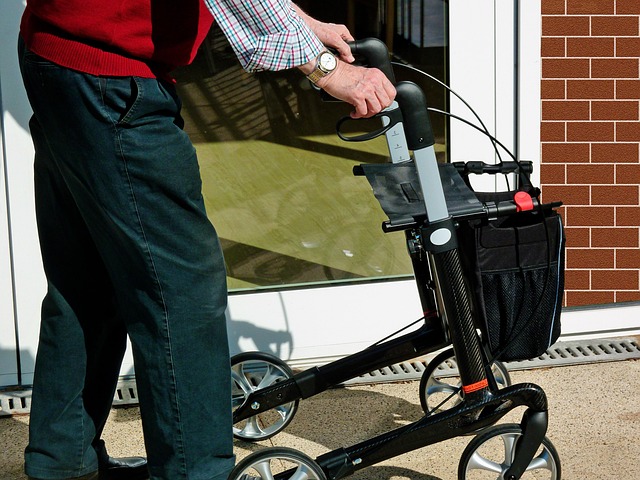A Comprehensive Guide to Choosing the Right One-Bedroom Senior Apartment
Finding the right one-bedroom senior apartment can feel overwhelming, but understanding how features like accessibility, affordability, and social amenities align with individual lifestyle goals often shapes the search. This guide explains how certain design elements—step-free layouts, walk-in showers, and simplified appliances—support mobility and independence. It also explores how people evaluate neighborhoods, nearby services, and transportation options to ensure long-term comfort. Through government platforms and digital tools, many find useful ways to compare offerings based on income eligibility, community setup, and personal preferences.

Selecting the right one-bedroom apartment as a senior involves evaluating multiple factors that directly impact your quality of life, financial stability, and overall well-being. From understanding housing assistance programs to exploring community amenities, making an informed choice requires thorough research and careful planning.
What Makes Affordable Senior Apartments a Viable Option?
Affordable senior apartments provide cost-effective housing solutions specifically designed for older adults with limited incomes. These properties often feature age-appropriate amenities, accessible design elements, and proximity to healthcare services. Many affordable options participate in government subsidy programs, allowing eligible seniors to pay reduced rent based on their income levels. Features typically include grab bars, wider doorways, emergency call systems, and on-site laundry facilities. Location considerations include access to public transportation, grocery stores, medical facilities, and social activities that support independent living.
How Does HUD Senior Housing Support Older Adults?
HUD senior housing programs offer federally subsidized apartments specifically for adults aged 62 and older [1]. The Section 202 Supportive Housing for the Elderly program provides affordable rental housing with coordinated supportive services. These properties maintain rent at approximately 30% of the tenant’s adjusted monthly income, making housing more accessible for seniors on fixed incomes. HUD properties must meet specific accessibility standards and often include features like emergency call systems, community rooms, and transportation services. Eligibility requirements include age verification, income limits based on area median income, and completion of application processes through local housing authorities.
Understanding Low Income Housing Options for Seniors
Low income housing for seniors encompasses various programs designed to assist older adults with limited financial resources. These options include public housing, Housing Choice Vouchers (Section 8), and privately-owned subsidized properties. Income eligibility typically ranges from 30% to 80% of the area median income, depending on the specific program. Application processes often involve waitlists, income verification, and background checks. Many low-income housing properties offer additional services such as meal programs, transportation assistance, and social activities. Location selection should prioritize access to healthcare, shopping, and community resources that support aging in place.
Exploring Retirement Living Communities and Their Benefits
Retirement living communities offer comprehensive housing solutions with varying levels of care and amenities. These communities typically provide maintenance-free living, social activities, dining options, and healthcare coordination. Independent living communities focus on active seniors who require minimal assistance, while assisted living facilities offer additional support services. Amenities often include fitness centers, libraries, game rooms, and organized social events. Community selection should consider proximity to family, healthcare facilities, and personal interests. Many retirement communities offer trial stays or tours to help prospective residents evaluate compatibility with their lifestyle preferences.
Cost Comparison and Pricing Insights for Senior Housing Options
Understanding the financial aspects of senior housing helps in making budget-conscious decisions. Costs vary significantly based on location, amenities, and level of care provided.
| Housing Type | Average Monthly Cost | Income Requirements | Key Features |
|---|---|---|---|
| HUD Section 202 | $400-$800 | 30% of area median income | Subsidized rent, supportive services |
| Low Income Housing | $300-$700 | 50-80% of area median income | Income-based rent, basic amenities |
| Independent Living Community | $1,500-$4,000 | Varies by location | Full amenities, social activities |
| Assisted Living | $2,500-$6,000 | Private pay or long-term care insurance | Personal care services, meals included |
Prices, rates, or cost estimates mentioned in this article are based on the latest available information but may change over time. Independent research is advised before making financial decisions.
Essential Factors to Consider When Choosing Your Apartment
Selecting the right one-bedroom senior apartment requires evaluating personal needs, financial capabilities, and lifestyle preferences. Consider proximity to healthcare providers, family members, and essential services like grocery stores and pharmacies. Evaluate building accessibility features, including elevators, ramps, and accessible bathrooms. Review lease terms, pet policies, and community rules that may impact your living experience. Assess available amenities such as fitness facilities, social spaces, and transportation services. Safety features like security systems, emergency call buttons, and well-lit common areas contribute to peace of mind. Schedule visits during different times of day to observe community atmosphere and staff interactions.
Making an informed decision about senior housing involves balancing affordability, location, amenities, and personal preferences. Whether pursuing government-assisted housing or private retirement communities, thorough research and careful evaluation ensure you select housing that supports your independence and enhances your quality of life during your retirement years.




